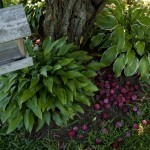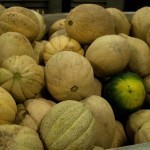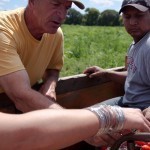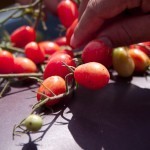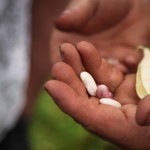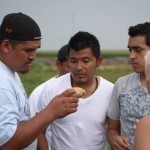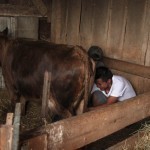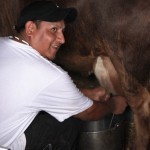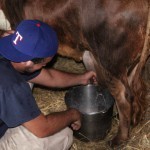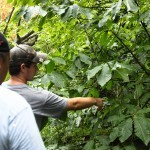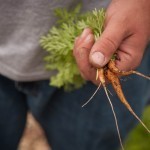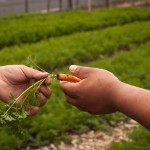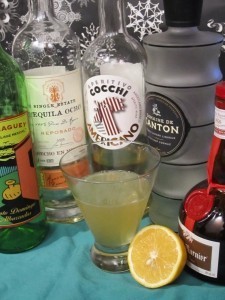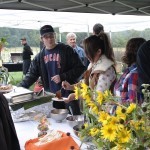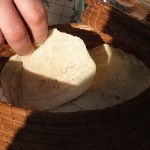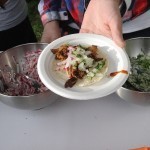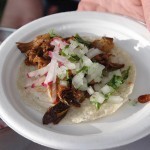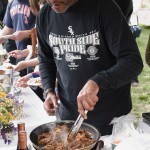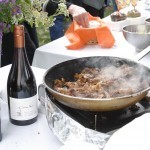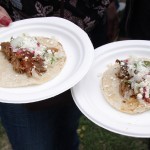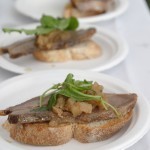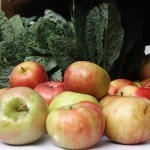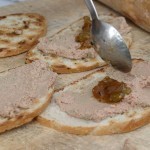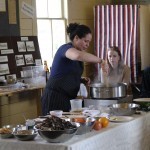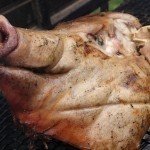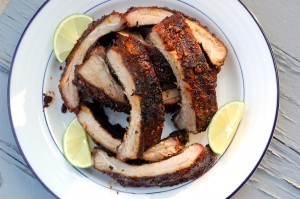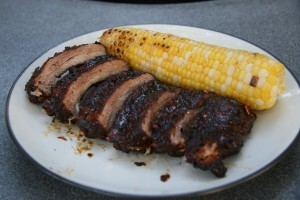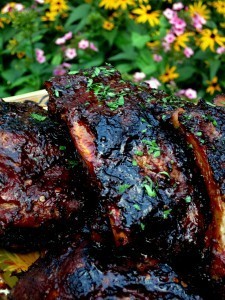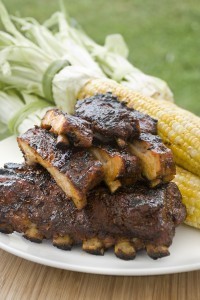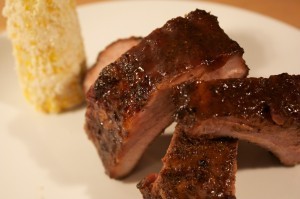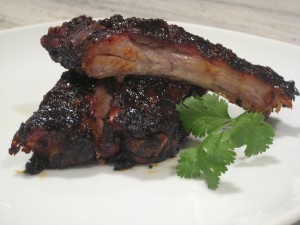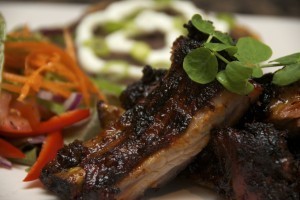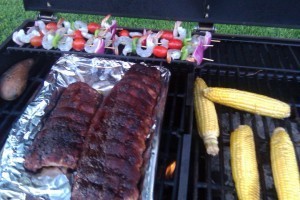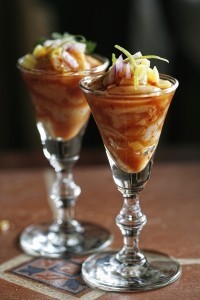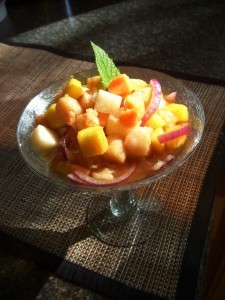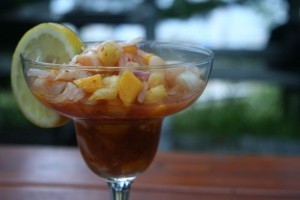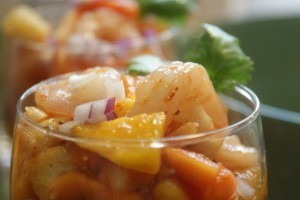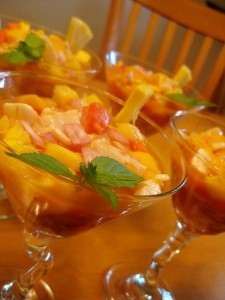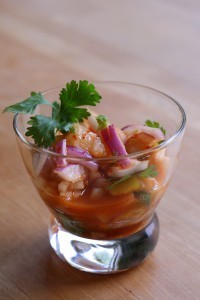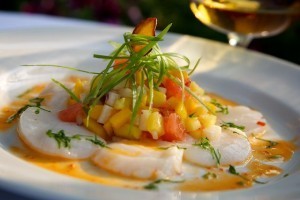Rick Bayless's Blog
December 6, 2011
Why Cascabel? By Rick Bayless
By:
Rick Bayless
In my early twenties, I had an epiphany. I was in graduate school toiling my way toward what I'd hoped would become a professorship in anthropology and linguistics. I thought my complete fascination with the way culture expresses itself through language would never fade, when I suddenly found the kitchen consuming way more of my attention than the library. I was confused and conflicted until I woke up to one important truth: I was learning as much about cultures by recreating their spicing and cooking methods as I had by studying the way they string together words. The kitchen was becoming my unique and comfortable window to culture. And for that, I had a head start: I'd grown up working in my family's barbeque restaurant in Oklahoma City, and I understood first-hand how food reflects the history and geography of a place. I had seen how food binds people together with a sense of regional pride. Especially barbeque.
But after several years of this culinary cultural exploration, I recognized that I wasn't attracted to just any culture. I'd done my undergraduate work in Spanish language and literature and Latin American studies, and Mexico felt more like a spiritual and culinary home to me than anywhere else on the planet. More than the barbeque pits I'd grown up with, more than the gastronomic Meccas of France and Italy, China or Japan. I found Mexico's confluence of cultures—Indigenous, Spanish, African, French, Japanese, Chinese—rich with flavor and fascination. The country's wildly diverse regional cuisines blended with that legendary hospitality and effervescent spirit of fiesta became my obsession.
So I started down a different career path than I'd ever imagined, that of free-lance culinary anthropologist in Mexico. For five years, I worked on turning my research into a people-and-places-focused cookbook, one that illuminated the real food of Mexico for a popular American audience.
Yet, no matter how clearly I detailed ingredients and procedures, I found my recipes—in fact, the whole medium of recipe writing— imprecise at best. I was worried that they still weren't tasting how delicious the real food of Mexico can be.
So I opened a restaurant in Chicago, a spot where my wife's family had roots, even though I'd never owned a restaurant before or even worked in one in Chicago. But I was dead-set on creating a restaurant that showcased the real regional specialties of Mexico, most of which had never been heard of in the United States. There was certainly no culinary school I could attend that would teach me how to translate these dishes from rustic and homey village recipes to restaurant-worthy preparations that an American clientele could understand. That's what I'd have to do on my own—without losing the heart and soul of the originals.
Twenty–five years ago, when my wife, Deann, and I started serving guests at Frontera, I began my real education about food's full potential in people's lives.
From those who passed through our dining room I began to hear stories of how the flavor of a Frontera dish had brought more than momentary pleasure, more than mere entertainment. At one table, I'd hear that the flavor of a mole so reminded one diner of her departed grandmother's specialty that she'd been swept into a flood of joyous memories. She'd learned the laborious preparation in her grandmother's kitchen, and mastering the final seasonings made her feel fully Mexican.
At another table, diners talked of sensing a perfect union with terrain and season—with place and time—as they ate dishes made from ripe local produce. They felt satisfied in a different way, they said, than when eating typical grocery-store fruits and vegetables.
There was a guy who chose Frontera as his go-to date restaurant because the food and drinks were so sexy—so gutsy, vibrant and spicy. Nowadays, he and his wife celebrate their wedding anniversary with us.
Thankfully, those comments of deliciousness, connections to place and time, to personal history, to love and life were frequent (and welcome). It was comments from another group of guests, however, that I found enigmatic. Those were the comments of transformation. For some, the dishes they enjoyed seemed to serve as a catalyst for near-magic at the table, for an unforgettable and profound connection between those who'd gathered to share the meal. For others, all it took was a few bites for them to feel they had unexpected intimacy with a culture they'd only known as a casual acquaintance.
Still, for others, the experience was even more personal and transformative. The flavors and textures they encountered opened doors of comprehension and emotion that touched them deeply—on occasion moving them to tears. Food can do that, just as theater, music, literature, sculpture and painting can. At least I believe it can.
In Cascabel, we are casting food as a main character. And by taking this bold step, we are inviting our audience (or are they our guests?) to open themselves up to the ways food can touch us—just as we open ourselves to any character— and to fully experience that potential through taste and texture. As most of us have experienced in our lives, food's character is multifaceted—sometimes opening doors of understanding to culture, people and place, sometimes offering unexpected exhilaration, hopefully transforming many through its natural beauty.
Can food—does food—have as much potential for emotional impact as other art forms? That is the question Cascabel explores.
Providing the full experience of a meal to our audience in Cascabel—rather than simply having actors perform the experience—offers a few challenges. Typically, when you're experiencing most any form of art—imagine yourself at a concert or play, in a museum or reading a piece of literature—you're entire focus is captivated by the musicians or actors, the paintings or words on the page. You've opened a door for yourself up to experience feelings, to broaden your horizons, perhaps see life or nature or people in a new light. That's true In Cascabel, too, though we ask our audience to move their attention to the food itself—to give the dish in front of them the opportunity for its "solo." As the characters in Cascabel turn their attention to what they're eating, having their own unique experiences with each dish, we invite our audience to taste and do the same.
It is my hope that this will lead us toward developing a new vocabulary to describe the flavors and textures of food, allowing those descriptions to transcend the physical and mundane. When "tangy" and "soft" become "racy" and "voluptuous," we've taken a step toward thinking of food in other terms.
August 27, 2011
Nichols Farm Visit
July 29, 2011
Frontera Day Trip to Spence Farm
June 18, 2011
Photos From City Farm
December 11, 2010
Fiesta at Rick's HOLIDAY Twitter Contest Winners
Once again, I am completely blown away by the beautiful photos and creative recipes that were submitted. From our classic Topolo Margrita, these winners went in many different directions and came up with some fabulous drinks (for those who didn't win, I hope the buzz you got was prize enough!) I would like to thank my very generous twitter followers for allowing me to share their fabulous recipes with you all. Happy Holidays!
This is the recipe all of these winners started with: R Classic Topolo Marg: mix 1.5c frsh lime j+3/4c sugr.Chill.Add 2.25c anejo teq+1/2c Torres Orange Liq.Shake well w ice.Serve up,saltd glass
Adam L
Resucitador Cadáver #8
- 1 oz Tequila Ocho Reposado 2008
- 1 oz Cocchi Americano
- 1 oz fresh meyer lemon juice
- 1/2 oz Domaine de Canton
- 1/2 oz Grand Marnier
- splash mezcal (Del Maguey Santo Domingo Albarradas)
shake with ice. serve up.
Chrystal O.
Made with Don Eduardo anejo and a little more squeezed clementine juice for my twist.
GmailCharFrog
1 1/2 cups fresh lime juice
3/4 cup sugar
2 1/4 cup's 100% agave Anejo Tequila
1/2 cup Midori Melon Liqueur
a lime half to moisten the rim
margarita salt
ice
John B.
Feliz Pomerita
2 oz. Tequila
2 oz. Cointreau
1 oz Fresh squeezed lime juice
1 oz Pomegranate syrup, plus extra to line glass (see recipe below)
Pomegranate seeds
Wet the edge of a chilled cocktail glass with pomegranate juice and rim with sugar. Line the inside of the glass with pomegranate syrup. In an ice-filled cocktail shaker combine tequila, cointreau, pomegranate syrup and lime juice. Shake vigorously and strain into glass. Garnish with fresh pomegranate seeds.
Pomegranate Syrup
1 cup sugar
1/2 cup pomegranate juice
In a small pot, combine sugar and syrup and bring to a boil, stirring constantly. Let boil 3-5 minutes until reduced and thickened. Cool completely.
Nancy M.
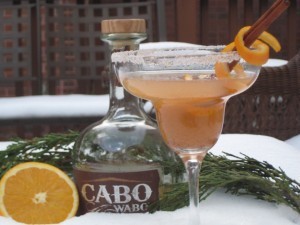
Cinnamon Twist Margarita
For cinnamon simple syrup: 1/2 c. sugar, 1/2 c. water, 1 t. cinnamon, simmer for 3 minutes.
Add 1 1/2 t. cinnamon simple syrup to 3 oz. Classic Topolo Margarita mix. Shake well with ice.
Mix 1/4 c. sugar with 1/4 t. ground cloves. Rub the rim of glass with fresh cut orange, rim glass with sugar/clove mixture. Pour drink, add a squeeze of orange. Garnish with orange twist wrapped around a cinnamon stick.
Matt N
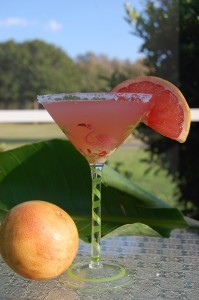
The Floridarita
1 oz- tequila
1 oz- simple syrup
1 oz- triple sec
3 oz- freshly sqeezed red grapefruit juice
Shake and pour into salted glass.
Marleigh R.
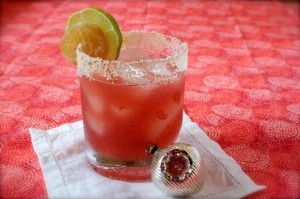
Margarita Svenska
(single cocktail)
½ oz Rhum Clément Creole Shrubb orange liqueur
1½ oz Centenario Rosangel tequila
1 oz lime juice
¼ oz simple syrup
2 tsp lingonberry preserves
garnish: ginger salt, lime wheel, candied ginger
Ginger Salt
½ tsp powdered ginger
2 Tbsp kosher salt
Add both spices to a small bowl and mix well to combine.
For the margarita:
Rim a glass with ginger salt, fill with ice and set aside.
In a shaker, combine all the ingredients with ice and shake until cold and well combined. Strain into the prepared glass, garnish with the lime wheel and a slice of candied ginger and serve.
Carlos E.

PRICKLY PEAR MARGARITA WITH LIME/SALT AIR
1 part añejo tequila
1 part orange liqueur
Juice of 1 lime
1 part of prickly pear juice (recipe below)
Prickly pear juice
3 pounds of ripe prickly pears
1 cup of sugar
1/3 cup of corn syrup
Lime salt air
1/2 cup lime juice
1/2 cup of water
1 tbsp of salt
1 tsp soy lecithin
To make the prickly pear juice, trim the top and bottom of each pear with a knife and make a lengthwise cut then peel off the skin. Cut into chunks and put in a blender. Strain into a fine sieve into a bowl add sugar, corn syrup and stir.
To make the lime/salt "air"
In two inch deep container add the lime juice, water, salt and soy lecithin. With a submersible blender at high speed blend until about a 1 inch layer of foam or "air" forms on top.
To make the margarita, in a shaker add ice, tequila, orange liqueur, lime juice, and prickly pear juice. Shake vigorously then place into a martini glass and with a spoon pour the lime/salt "air" around the glass and serve right away.
Matt K.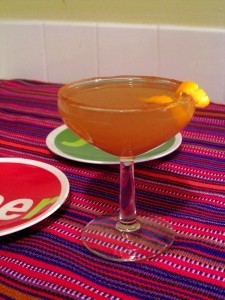
La Palomita de la Paz (recipe makes one drink)
In a mixing glass, combine:
2-1/4 oz reposado tequila
3/4 oz fresh lime juice
3/4 oz grapefruit juice
3/4 oz Luxardo maraschino liqueur
1/2 oz agave nectar
1/2 oz St. Elizabeth allspice dram
Shake with ice; strain into a chilled cocktail glass rimmed with cinnamon sugar. Garnish with a twist of lime (or clementine, if you're feeling especially festive.)
Candace

Topo-Twist Rita
2.5c Brazilian lime j.
3/4c Mexi-cane sugr
1/2c 100yr Gran Marnier
2.5c Tres Manos 3yr anejo teq
Shake>Voss ice
Serve up/rim sug+sea salt
September 29, 2010
Photos from Spence Farm Harvest Feast
August 14, 2010
August 9, 2010
Fiesta at Rick's Twitter Contest: Week Four Winners
Recipe for Week 4:
"Proc 4 grlc,6T ancho,4t sugr&peppr,5t salt,1t oreg,½t cumin.Rub 4 slb ribs;ovrnite.Bake 300 75 min.Blend:7oz chiptles&3/4c honey.Grill;glaze"
This contest has truly been a remarkable experience for me. For the past four weeks I have seen so many beautiful and unique interpretations of a 140 characters. I got the most entries so far in the final week of this contest. Here are this weeks winners:
First Place: Svetlana W.
Other Winners:
August 5, 2010
Gracias a Nuestros Amigos Latinoamericanos
Muchísimas gracias a todas las personas que se han comunicado conmigo para felicitarme por haber ganado Top Chef. Estoy muy orgulloso de haber podido representar a la cultura y cocina Mexicana.
August 2, 2010
Fiesta at Rick's Twitter Contest: Week Three Winners
Recipe for Week 3:
" 8oz slicd raw scallops+1c grapefrt j:45 min.Drain;blend 2/3c juice,1-2 chipotles,4 rstd grlc,2T br sgr.Mix w scal, red on,trop fruit,jicama "
This was perhaps one of the most challenging recipes yet. With little instruction on how to chop fruit and veggies, it was really up to the participants to show their creativity. I truly received some beautiful entries. For week three, here are my winners:
First Place: Erika
Other Winners:
Rick Bayless's Blog
- Rick Bayless's profile
- 83 followers






